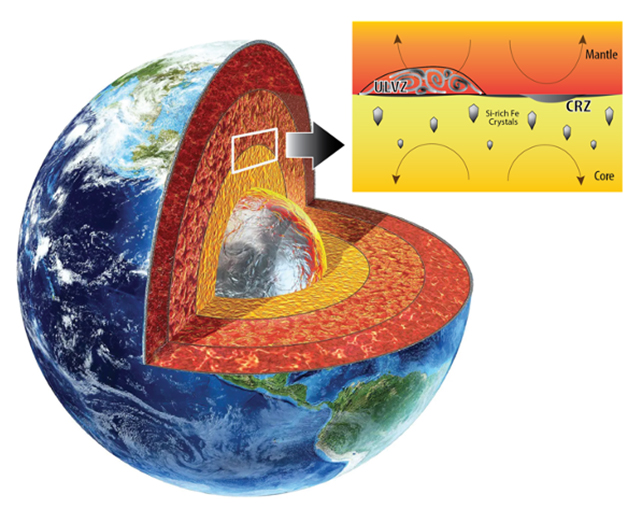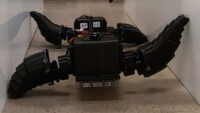One source of variability occurs in low-density pockets of material some 3,000 kilometers (just under 1,900 miles) below the surface, between the liquid iron alloy outer core and the mantle.
A new study proposes a silicon-rich ‘snow’ that rises from the outer core could help explain some of the anomalies in observations. Since silicon would make the particles lighter than the surrounding liquid iron, the material could flow out towards the mantle and settle in drifts that cause sound waves to distort in unpredictable ways.

“If silicon and hydrogen are the two main light elements in the outermost core with appropriate abundances, such a rising silicon-rich snow can occur,” says geoscientist Suyu Fu from the University of Tokyo in Japan.
To test this, the team recreated conditions inside Earth‘s outer core in a laboratory. An iron-silicon alloy was loaded inside a hydrogen-argon gas before being ultra-compressed inside a diamond anvil cell.
These devices are often used by geologists to achieve levels of compression comparable to those inside planets like our own. Samples are compressed via mechanical force between two diamonds (hence the name) and studied for changes.
In this case the sample was heated using lasers and monitored via X-rays. The scientists were able to overcome a problem with previous experiments where high temperatures would cause the hydrogen containing the iron alloy to diffuse into the diamond.
“Our team developed a new method where hydrogen is mixed with argon in diamond anvil cells,” says geoscientist Sang-Heon Dan Shim, from Arizona State University.




GIPHY App Key not set. Please check settings